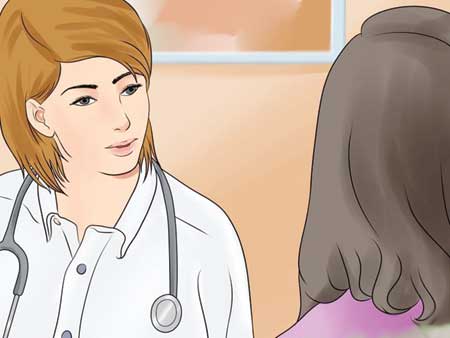The curious case of PCOS
Laydis, have you ever stopped to see the ‘motapay ka hal aap ko fori tor pay milegay’ sort of ads, if only to wonder why such social interactions are available to misguide and waste your precious time? Why peers are still in business for problems regarding infertility and why girls and women feel uncomfortable telling their medical history to a doctor? With a lot of paid content online, there is a slightly greater chance that you have neither the correct information to identify Polycystic Ovarian Syndrome (PCOS) nor the ability to fight the stigma attached to something as common as this condition is.
In fact, this confusion is the biggest reason why PCOS doesn’t get the attention it deserves despite being the most common endocrine disorder – its prevalence ranging from 2.2-26 percent amongst women of childbearing age. And this starts from the name itself! Most individuals equate PCOS to actual cysts on ovaries when really poly simply means ‘multiple’ and cyst refers to the ‘size of ovarian follicles’.
September being the PCOS Awareness Month, we talked to Dr. Melissa Mazcuri Karimian to share her experience with PCOS, the type of questions that are misunderstood and what needs to be done to help those affected.
Demystifying the syndrome
Perhaps you have overheard statements like ‘Its causes are unknown’ or ‘It’s not easy to diagnose’ while waiting for your turn at the gynecologist. Perhaps, a doctor himself said the unspeakable. The point is you need hard facts to understand this syndrome properly.
Why, hello, PCOS!
Not restricted to any specific order, the signs and symptoms usually include acne (on face, chest and back) along with excessive hair growth on the face – which is more like coarse hair – as well as on chest and belly. Apart from that, an irregular ovulation (that leads to scanty or heavy flow) or absent periods in that month is the red flag.
Another important factor is weight gain; not only is it difficult to reduce, it also leads to obesity. Last but not the least skin change is alarming, but again it may or may not be present at the time of diagnosis.
The hormonal play
As far as the cause is concerned, the hormones getting out of balance is, to a large extent, related to environmental and genetic factors.
Let’s talk about insulin first. It is a hormone to control how much glucose is metabolised and provided to the tissues of human body. Now, obese or non-obese patients with PCOS can develop insulin resistance i.e. their body is unable to respond to insulin hormone. This initiates a cycle: pancreas produce insulin -> no response from body -> more insulin production -> affect ovaries and influence it to produce large amounts of testosterone (or male sex hormone). The result is acne and hirsutism.
The second one that plays a role is the luteinizing hormone (LH). Produced by the pituitary gland, LH along with follicle-stimulating hormone (FSH) is responsible for normal menstrual cycle. The girl suffering from PCOS would have increased LH; her ovaries would stop producing eggs, make more male sex hormone and, therefore, cause acne, hirsutism and decreased fertility.
Breaking taboos
Based on the assumption that PCOS runs in the family, and that a woman whose mother or sister had it is definitely a patient, people commenting on the condition often tend to (un)intentionally rub the patient the wrong way. It can even be the doctor’s remarks that make you feel like crap. You can feel the social stigma clinging to them; now you can either cringe or shy away from these questions or consider it this way that it’s their profession to pay attention to the medical issues of the people who present them. What’s important is who and how you are approaching the specialist.
For the record, the only person you need to consult for PCOS is your gynecologist. See, a girl who has PCOS present to a doctor with irregularity of/absent menstrual cycle or with difficulty in conceiving or with weight gain or with excessive hair growth. The approach of a girl can be divided along their social-economic status: one who lives in a rural society and one who lives in an urban society.
The former don’t have the facilities to approach a specialist directly; at times, it’s the lack of awareness. We’ve seen that until and unless it’s a matter of their mortality, the disease does not become a priority. However, a clinic running in a remote area of the ‘urban’ society is no better either. It’s necessary that the girl realises that something is going wrong with her body.
There is no reason why the girl should harbour any negative feelings; there should be no resentment and definitely no shame. There is no telling when it happens – you can be an adolescent or a mother of two. Generally speaking, PCOS is not part of any conversation at homes until and unless someone goes through it. But if they have no problem talking about sex education in their homes then PCOS is no different. And so mothers have to be keen observers of the changes their daughter(s) experience as soon as they hit puberty.
To prevent or treat, that’s the question
As young girls gain awareness of this condition they would understand that a healthy diet and a healthy lifestyle is the main asset to defeat this syndrome. Yes, there may be those burgers and French fries cravings to satiate, but giving in to the temptation means having carbs rich in sugar. They should be a monthly treat, not a regular part of your diet.
You know you have to bring the change in your lifestyle yourself; no one else would or can do it for you while you are cooped up inside with your computers or books. Spending 30-60 minutes daily walking and interacting with neighbours and friends isn’t too bad an option, too.
Despite all the precautions, you can still be diagnosed with PCOS. The reports of your physical examination, which includes androgen levels and BMI, biochemical tests and pelvic ultrasound are supposed to help the doctors rule out any other disease that shares its symptoms. After this, Rotterdam criteria are used to diagnose conclusively. And if it returns positive, here’s what you need to do:
The first line of treatment recommended is lifestyle modification in terms of diet and physical movement. Eat every important nutrient; exercise everyday. It’s the cornerstone to managing PCOS – and to conceive.
Moving forward, low-dose combined oral contraceptive pills (COCP) and metformin, for instance, are few medical treatments that improve menstrual cycle. The COCP especially help in preventing endometrial cancer, a complication in long-term.
Other long-term complications of PCOS include: diabetes, cardiovascular heart disease with high blood pressure levels, high cholesterol levels, infertility issues and sleep apnea. Regular follow-up and appropriate treatment can prevent these complications. So there’s no need to be scared!

Dr. Melissa Mazcuri Karimian
Commenting on the fact that boys also face similar issues due to hormonal imbalance and whether the Pakistani government has taken steps to spread awareness, Head of Gynecology Department at Abbasi Shaheed Hospital Dr. Tazeen Abbas says, ‘The government has not taken any step or initiative for PCOS. And yes, since one of the etiologies of PCOS is genetic and it’s associated with Metabolic Syndrome, sons of these mothers are prone to Metabolic Syndrome. This means, they’re likely to suffer from obesity and obesity-related diseases such as Ischemic heart disease, diabetes, hypertension and dyslipidemia, to name a few.’
caption
Dr. Melissa Mazcuri Karimian